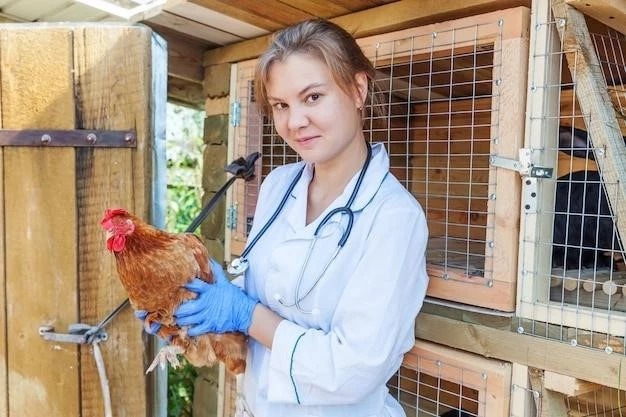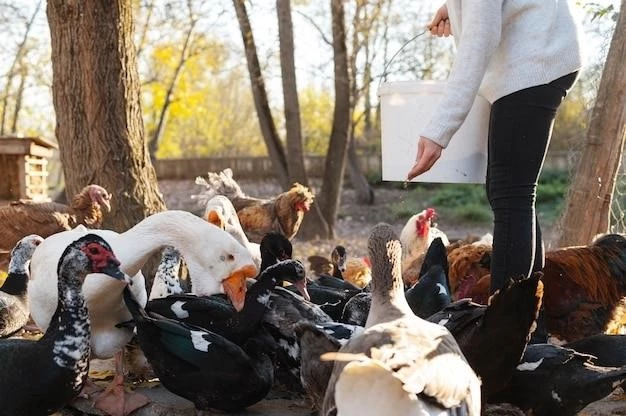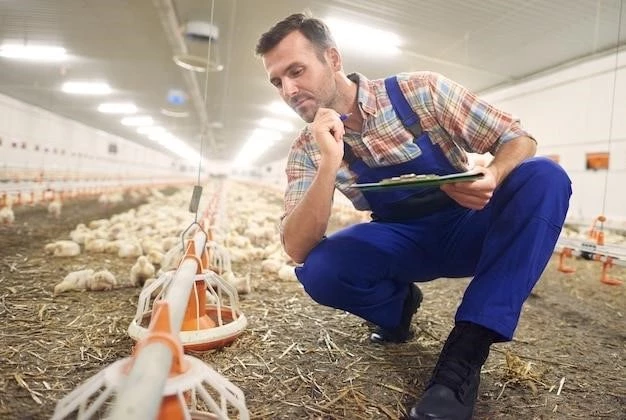Article Plan⁚ Disease ⏤ Reticuloendotheliosis
Introduction to Reticuloendotheliosis
Reticuloendotheliosis is a complex disease caused by the reticuloendotheliosis virus (REV) that affects poultry, including chickens, turkeys, and ducks. This virus can lead to immunosuppression, neoplastic conditions, and a range of syndromes impacting various tissues. Understanding the epidemiology, clinical background, and impact of REV on poultry production is crucial in managing outbreaks and preventing further spread. Stay informed about the latest research developments and strategies for controlling and treating reticuloendotheliosis to safeguard the health of your poultry.
Overview of Reticuloendotheliosis Virus (REV)
Reticuloendotheliosis virus (REV) is a gammaretrovirus that infects a variety of domestic and wild birds, causing immunosuppression, runting syndrome, high mortality, acute reticular cell neoplasia, and various lymphomas. It is crucial to understand the characteristics and spread of REV to implement effective control measures and safeguard avian health globally.
Clinical Background of Reticuloendotheliosis
Reticuloendotheliosis, caused by the retrovirus group reticuloendotheliosis virus (REV), presents as various syndromes in poultry, including runting disease syndrome and acute reticular cell neoplasia. Understanding the clinical manifestations and implications of REV infections in birds is essential for effective management of outbreaks and control measures. Stay informed about the clinical features of reticuloendotheliosis to protect the health of your avian population.
Types of Reticuloendotheliosis Diseases
Reticuloendotheliosis encompasses a spectrum of ailments induced by the reticuloendotheliosis virus (REV) group, including runting disease syndrome, chronic lymphoid neoplastic syndrome, and acute reticular cell neoplasia. Understanding these distinct types of reticuloendotheliosis diseases is crucial for implementing appropriate management strategies and controlling their impact on avian populations. Stay informed about the various manifestations of reticuloendotheliosis to protect the health and productivity of poultry.
Epidemiology of Reticuloendotheliosis
Reticuloendotheliosis virus (REV) infects various avian species worldwide, including chickens, turkeys, ducks, and geese. The virus can lead to immunosuppression, runting syndrome, and neoplastic conditions, impacting poultry production significantly. Understanding the prevalence, transmission routes, and risk factors associated with REV is crucial for implementing effective control and prevention strategies to mitigate the spread of the disease among avian populations. Stay informed about the epidemiology of reticuloendotheliosis to protect the health and welfare of your birds.
Symptoms and Manifestations of Reticuloendotheliosis

Reticuloendotheliosis manifests through various symptoms in infected poultry, including immunosuppression, runting syndrome, neoplastic conditions, and increased mortality rates. Recognizing the signs of reticuloendotheliosis such as decreased weight gain, diarrhea, leg weakness, and reduced productivity is vital for early detection and prompt implementation of control measures to prevent further spread within poultry flocks. Stay vigilant for these clinical manifestations to protect your birds from the impact of reticuloendotheliosis.
Causes and Risk Factors of Reticuloendotheliosis
Reticuloendotheliosis is primarily caused by the retrovirus group known as reticuloendotheliosis virus (REV). This virus infects various avian species, posing a substantial risk to poultry health. Understanding the specific causes and risk factors, such as viral transmission pathways and potential co-infections, is crucial for effectively managing and preventing the spread of reticuloendotheliosis among bird populations. Stay informed about these factors to establish robust preventive measures and protect your birds from this disease.
Diagnosis of Reticuloendotheliosis
Diagnosing reticuloendotheliosis involves a combination of methods such as histopathology, PCR testing, serology, and virus isolation. Histopathological examination of tissues can reveal characteristic lesions, while PCR assays detect viral genetic material. Serological tests help identify antibodies against the virus, and virus isolation involves growing the virus in cell culture. Prompt and accurate diagnosis is crucial for implementing appropriate control measures and preventing further spread within poultry populations. Consult with a veterinarian or avian health specialist for guidance on diagnosing reticuloendotheliosis in your birds.
Treatment Options for Reticuloendotheliosis
When addressing reticuloendotheliosis in poultry, treatment options focus on managing symptoms and reducing the impact of the disease. Supportive care, such as providing appropriate nutrition, maintaining optimal environmental conditions, and implementing biosecurity measures, can help in minimizing stress on infected birds and preventing further transmission. Consult with a veterinarian to determine specific treatment strategies tailored to your poultry flock and to ensure proper disease management;
Prevention Strategies for Reticuloendotheliosis
Preventing reticuloendotheliosis in poultry involves implementing comprehensive biosecurity measures, including strict sanitation protocols, controlling vectors like mosquitoes, and minimizing contact with potentially infected birds. Vaccination against Marek’s disease can also provide some protection as co-infections can worsen the impact of reticuloendotheliosis. Regular monitoring, early detection, and prompt isolation of infected individuals are critical components of prevention strategies to safeguard poultry health and productivity.
Impact of Reticuloendotheliosis on Poultry Industry
Reticuloendotheliosis can have a significant impact on the poultry industry due to its contagious nature and potential for causing immunosuppression, reduced productivity, and mortality in infected birds. Outbreaks of reticuloendotheliosis can lead to economic losses for poultry producers, as infected flocks may experience decreased growth rates, compromised immune responses, and increased susceptibility to secondary infections. Understanding the implications of reticuloendotheliosis on poultry health and industry productivity is essential for implementing effective control measures and maintaining the overall well-being of avian populations.
Research and Developments in Reticuloendotheliosis
Research on reticuloendotheliosis continues to explore the characteristics of the diverse syndromes caused by retroviruses within the reticuloendotheliosis virus (REV) group. Recent advancements focus on understanding the pathogenesis, transmission dynamics, and potential treatment options for this complex avian disease. Stay updated on the latest developments in reticuloendotheliosis research to ensure proactive management strategies and effective interventions for poultry health.
Co-Infection Risks with Marek’s Disease
Co-infection with Marek’s disease virus (MDV) and reticuloendotheliosis virus (REV) poses risks to poultry health, leading to clinical tumors, immunosuppression, and increased susceptibility to secondary infections. Understanding the potential interactions between MDV and REV is crucial for preventing mixed infections and their detrimental effects on bird populations. Implementing stringent biosecurity measures and vaccination protocols can help mitigate the risks associated with co-infection, safeguarding poultry welfare.
Support and Resources for Individuals Affected by Reticuloendotheliosis
Finding support and resources for individuals affected by reticuloendotheliosis is crucial in managing the impact of the disease on poultry populations. Through collaboration with veterinarians, avian health specialists, and agricultural extension services, affected individuals can access guidance on disease management, biosecurity practices, and vaccination protocols. Additionally, staying informed about research advancements and participating in poultry health workshops can enhance your knowledge and preparedness in dealing with reticuloendotheliosis. Seek support from trusted sources to optimize the health and well-being of your birds.

